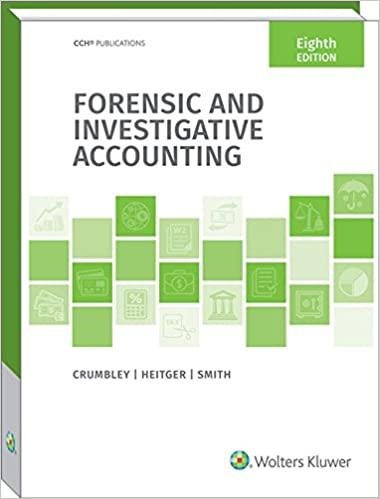
ans for d, e
i know the answer if a,b,c so plz do solve d, e
Suppose that you've been hired to determine the best location for the next Woody's restaurant, where Woody's is a moderately priced, 24-hour, family restaurant chain. You decide to build a regression model to explain the gross sales volume (denoted as Y) at each of the restaurants in the chain as a function of various descriptors of the location of that branch. If you can come up with a sound equation to explain gross sales as a function of location, then you can use this equation to help Woody's decide where to build their newest eatery. Your discussions lead to a number of suggested variables. After a while, you realize that there are three major determinants of sales (customers) on which virtually everyone agrees. These are the mumber of people who live near the location, the general income level of the location, and the number of direct competitors close to the location. The exact definitions of the independent variables you decide to include are: N = Competition: the number of direct market competitors within a two-mile radius of the Woody's location P = Population: the number of people living within a three-mile radius of the Woody's location I = Income: the average household income of the population measured in variable P Please briefly decribe the steps and give outputs of each question below. a. (4 points) Display the descriptive statistics for a group of variables including Y, N, P and I. b. (4 points) Display the simple correlation coefficients between all pairs of variables in a group c. (6 points) Run a regression with explanatory variables, N. P and I. Write down the theoretical model specification and show your Eviews steps AND output. d. 6 points) Eviews reported the F-statistic. Write out the null hypothesis and alternative hypothesis. What is cost in d.f. and d.f. remaining? Based on the F-statistic, is the model valid at 5% significance level? e. (6 points) Perform an F-test at 1% significance level to determine if the slope coefficients of N and P are jointly significant. State the null hypothesis and alternative hypothesis and give your conclusion about the test. Suppose that you've been hired to determine the best location for the next Woody's restaurant, where Woody's is a moderately priced, 24-hour, family restaurant chain. You decide to build a regression model to explain the gross sales volume (denoted as Y) at each of the restaurants in the chain as a function of various descriptors of the location of that branch. If you can come up with a sound equation to explain gross sales as a function of location, then you can use this equation to help Woody's decide where to build their newest eatery. Your discussions lead to a number of suggested variables. After a while, you realize that there are three major determinants of sales (customers) on which virtually everyone agrees. These are the mumber of people who live near the location, the general income level of the location, and the number of direct competitors close to the location. The exact definitions of the independent variables you decide to include are: N = Competition: the number of direct market competitors within a two-mile radius of the Woody's location P = Population: the number of people living within a three-mile radius of the Woody's location I = Income: the average household income of the population measured in variable P Please briefly decribe the steps and give outputs of each question below. a. (4 points) Display the descriptive statistics for a group of variables including Y, N, P and I. b. (4 points) Display the simple correlation coefficients between all pairs of variables in a group c. (6 points) Run a regression with explanatory variables, N. P and I. Write down the theoretical model specification and show your Eviews steps AND output. d. 6 points) Eviews reported the F-statistic. Write out the null hypothesis and alternative hypothesis. What is cost in d.f. and d.f. remaining? Based on the F-statistic, is the model valid at 5% significance level? e. (6 points) Perform an F-test at 1% significance level to determine if the slope coefficients of N and P are jointly significant. State the null hypothesis and alternative hypothesis and give your conclusion about the test
 ans for d, e
ans for d, e





